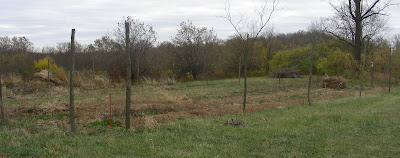 Ecology Action holds its Three-Day Workshop (aka 3DW, as opposed to WD-40) twice a year, usually the first weekend of March and November. It is intended as an opportunity for folks who have read about, practiced, or heard of Grow Biointensive to learn more through lecture, discussion, and hands-on practice. Not only is is it an educational experience for the participants, but for those of us who attend many times as presenters or support staff it is an inspirational event.
Ecology Action holds its Three-Day Workshop (aka 3DW, as opposed to WD-40) twice a year, usually the first weekend of March and November. It is intended as an opportunity for folks who have read about, practiced, or heard of Grow Biointensive to learn more through lecture, discussion, and hands-on practice. Not only is is it an educational experience for the participants, but for those of us who attend many times as presenters or support staff it is an inspirational event. This time over 50 people (some of them Ecology Action interns) came from California, Utah, New York, Oklahoma, Massachusetts, Colorado, New Hampshire, and Missouri, Manitoba and Alberta, Canada, and Ecuador to attend. Most of them had great gardening-related projects in the works, and all of them had fascinating work beyond gardening.
When we arrived the workshop presenters were John Jeavons (above and below, leading the participants down to EA's garden) and Ecology Action Garden Manager Carol Cox. Margo and I began doing some of the hands-on instruction after our first summer as apprentices, and began presenting during the lecture time in our third year. When Carol retired from EA last year we picked up the most of the classes she taught and created a couple of others. No comparison to the instruction she could give after 20 years of experience, but she was very encouraging to us, as was John. (At left, me workin' the overhead while teaching garden planning).
We decided that Alten was too young yet to hit the cross-country Amtr ak circuit for this workshop, so I went alone this time and taught for both Margo and myself. And while the opportunity was a great one and I had a wonderful experience, I will be glad to have Margo back when we teach in March 2011.
ak circuit for this workshop, so I went alone this time and taught for both Margo and myself. And while the opportunity was a great one and I had a wonderful experience, I will be glad to have Margo back when we teach in March 2011.
So come and see us!
(By the way, one of the participants was Matt Harnack, a documentary filmmaker and co-coordinator of the Common Ground Demo Garden in Palo Alto, CA. All of the photos in this post were taken by him. Thanks, Matt!)

When we arrived the workshop presenters were John Jeavons (above and below, leading the participants down to EA's garden) and Ecology Action Garden Manager Carol Cox. Margo and I began doing some of the hands-on instruction after our first summer as apprentices, and began presenting during the lecture time in our third year. When Carol retired from EA last year we picked up the most of the classes she taught and created a couple of others. No comparison to the instruction she could give after 20 years of experience, but she was very encouraging to us, as was John. (At left, me workin' the overhead while teaching garden planning).
We decided that Alten was too young yet to hit the cross-country Amtr
 ak circuit for this workshop, so I went alone this time and taught for both Margo and myself. And while the opportunity was a great one and I had a wonderful experience, I will be glad to have Margo back when we teach in March 2011.
ak circuit for this workshop, so I went alone this time and taught for both Margo and myself. And while the opportunity was a great one and I had a wonderful experience, I will be glad to have Margo back when we teach in March 2011.So come and see us!
(By the way, one of the participants was Matt Harnack, a documentary filmmaker and co-coordinator of the Common Ground Demo Garden in Palo Alto, CA. All of the photos in this post were taken by him. Thanks, Matt!)
2063


